Things we look for at bonsai exhibits: healthy, beautiful trees in well-thought-out displays, clean pots and attractive top-dressings. This much is true for almost any bonsai exhibit. It’s when we start to consider criteria for evaluating individual trees that things get interesting.
I have yet to visit an exhibit that lined up the trees on display by variety. I wouldn’t recommend it from a curation perspective, but it could be a great learning experience. Likewise if the trees were lined up by style. Seeing what works and what doesn’t can jump out when comparing like specimens side-by-side, and it’s a great way to highlight trees’ best points.
Below are bonsai displayed at the Bay Area Bonsai Associates’ 34th annual exhibit shuffled roughly by variety along with some notes specific to each group’s style or species.
First up – the junipers. What do we look for in juniper bonsai? Deadwood and movement. Taper and branch development count too, but deadwood and movement are key features of the variety.
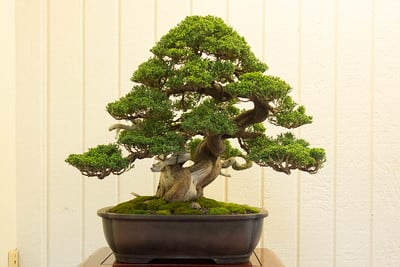
Shimpaku – note consistent taper and movement along the trunk
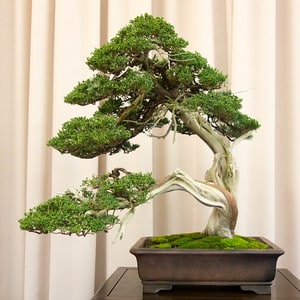
Shimpaku – good deadwood and movement
The silhouette suites the movement of the trunk well
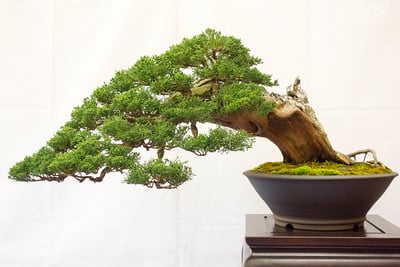
Shimpaku grafted on Sierra juniper – Jim Gremel pot
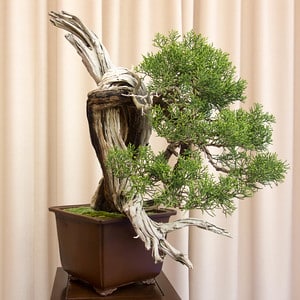
California juniper – the deadwood shows great age
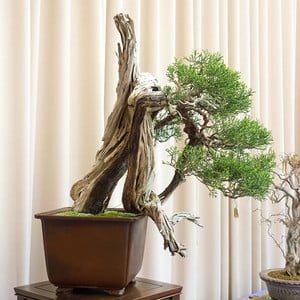
From the side – note the slender lifeline
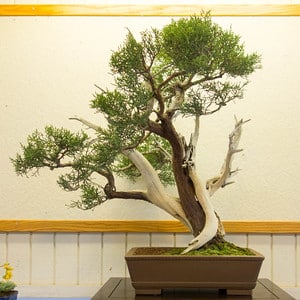
California juniper – good contrast between the life lines and the deadwood
Bringing the foliage closer to these key features could heighten the effect
Pines are prized for quite different features. For pines, age is best conveyed through the bark.
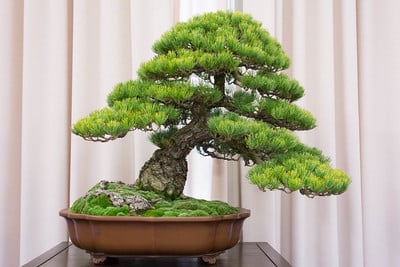
Japanese White pine – note the bark developing on the upper trunk and branches
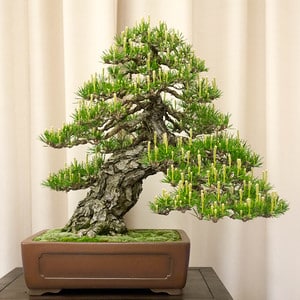
Japanese black pine – great trunk (and healthy candles!)
Note the consistent downward angle of the branches
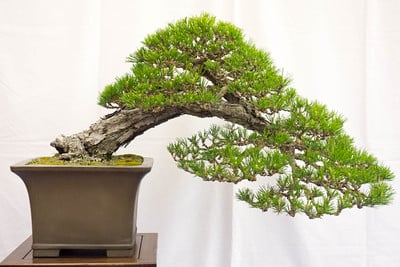
Japanese black pine – the semi-cascade approach is well-suited to this specimen
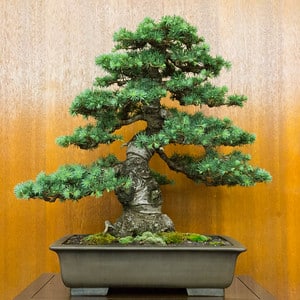
Atlas cedar
Deciduous trees too are prized for their trunks, but it’s in the branch development that we can see deciduous specimens at their best. Although it can be tricky to evaluate ramification after the leaves emerge, the young leaves are beautiful and do a great job of conveying the season.
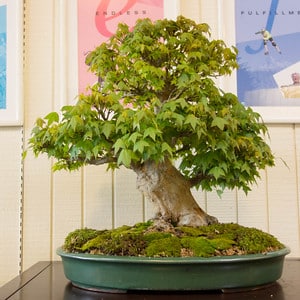
Trident maple – silhouette mostly in place
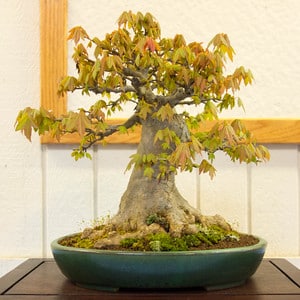
Trident maple – silhouette in development
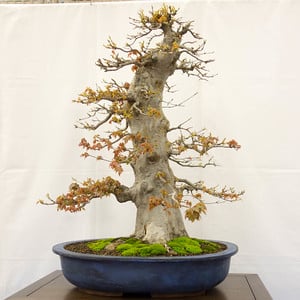
Trident maple – silhouette in early stages of development
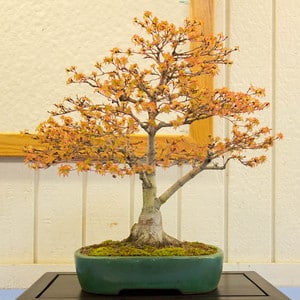
Japanese maple
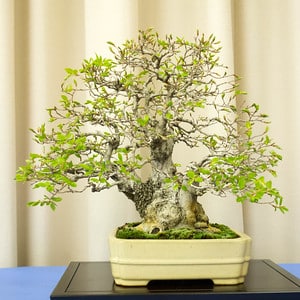
Korean hornbeam – the silhouette is looking good
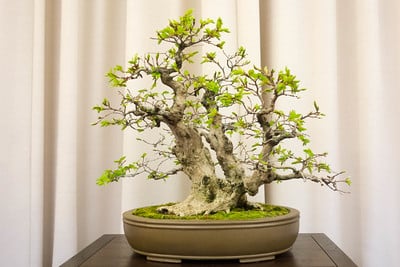
Korean hornbeam – silhouette in slightly earlier stages of development
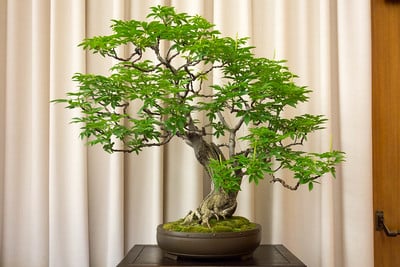
California Buckeye
Flowering varieties are much appreciated when shown in bloom and make great highlights for the exhibit hall.
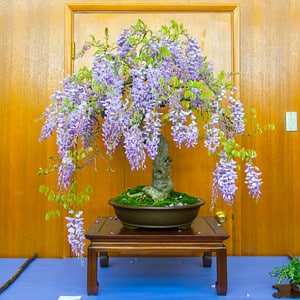
Wisteria
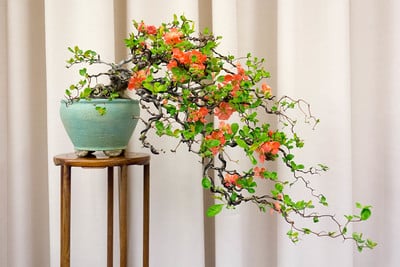
Contorted Japanese flowering quince – Jim Gremel pot
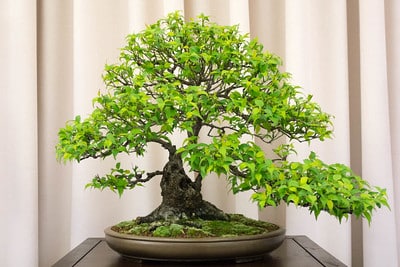
Ume
Beech are among the last deciduous varieties to leaf out in spring and remind us that we’re not completely done with winter.
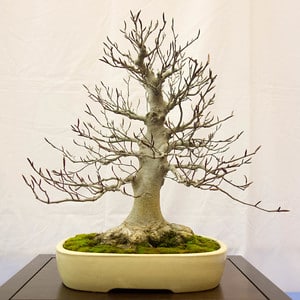
Japanese beech
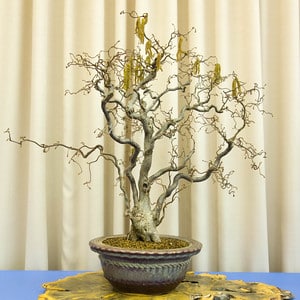
Contorted hazlenut
As broadleaf evergreens are typically shown in leaf, the idea is to show them full with beautiful silhouettes. Depending on the variety, a number styles are available, though informal upright makes for one of the more natural approaches.
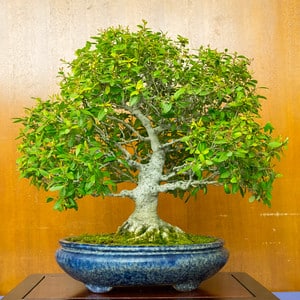
Yaupon holly
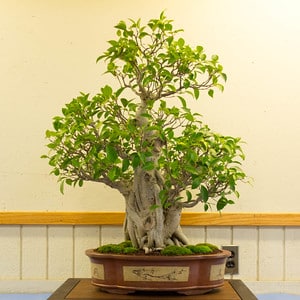
Ficus
Subscribe to Bonsai Tonight
New Posts Delivered Every Tuesday and Friday
paul3636 says
Has anyone made a study on bonsai pot material other then ceramic clay?
I have seen pots made up of wood, lexan, composit material, plastic, Crataegus Bonsai has used nylon cutting boards for slab, etc. etc..
Jonas Dupuich says
Hi Paul, if someone has made a study of non-ceramic bonsai containers I’d be interested to see it – I don’t know of such a study.
paul3636 says
Maybe someone like Peter Tea??????????????????????
mrmurt says
PS: I do believe the “Chestnut” is actually a California buckeye. They both have compound leaves though.
Rick Trumm says
The tree was labelled “Aeschylus” which is a Buckeye, rather than chestnut.
ancientbonsaico says
Jonas, Thank You for Sharing!
owenbonsai says
Hi Jonas, could you provide a little history on the California Buckeye? Thanks.
Jonas Dupuich says
Hi Owen – I don’t know the history of this tree. If anyone knows the history/owner, it’d be great to hear some details.
owenbonsai says
Thanks for the response. Please continue to produce the best bonsai blog on the Internet :).